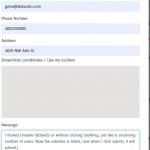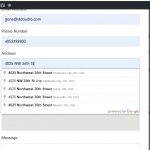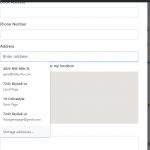Hi Shawn,
Thank you for contacting us and I'd be happy to assist.
I see two different autocomplete features in your screenshots:
1. The first one that is shown in your screenshot "map_ui_1.jpg" is added using the Chrome browser.
On my test website with an address field in a Toolset Form, I couldn't see this autocomplete, because autocomplete="off" is added to that input field, by default.
( screenshot: hidden link )
If you're seeing this autocomplete feature in your browser without making any changes to the default address field's code, it could be related to the Chrome browser's local settings.
2. The second one that is shown in your screenshot "map_ui_2.jpg" is added by the Toolset which is linked to Google Maps so that a visitor can easily select the correct address or coordinates.
That autocomplete feature is not only useful in terms of user experience but also allows Google Location API to get the correct latitude/longitude coordinates for the selected location and then saves them as values in the corresponding address field.
If someone needs an address field to save the exact location information, I can't think of a case where disabling this second autocomplete feature would be helpful.
On the other hand, if you need a field, where a visitor can share the complete postal or human-readable address, it would be better to use a single-line field for that and not an address field.
If you'll save the address information as plain single-line text, it will be possible to still show it on the map, using the "address" attribute in the "wpv-map-marker" shortcode ( ref: https://toolset.com/documentation/user-guides/maps/maps-shortcodes/#wpv-map-marker ). However, operations like distance filters won't work with that field ( ref: https://toolset.com/documentation/user-guides/maps/display-on-google-maps/filtering-and-ordering-map-markers-by-distance/ ), since the field won't have the information in the form of latitude/longitude coordinates.
I hope this helps and please let me know if you need any further assistance around this.
regards,
Waqar


